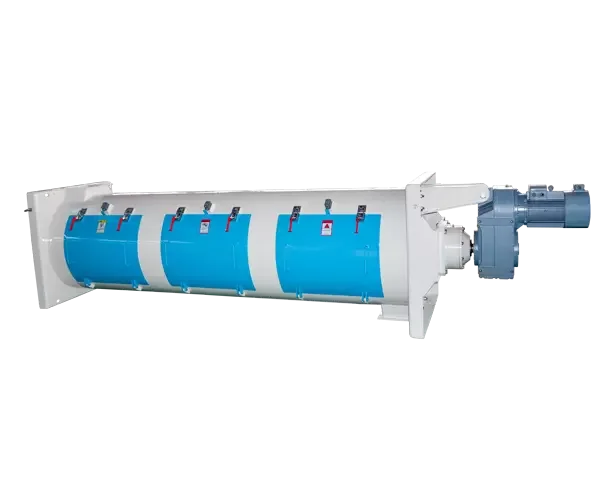The feed pellet mill is one of the indispensable equipment in the feed processing industry. It can process raw materials into granular feed and improve the digestibility and utilization rate of the feed. In order to further improve production efficiency and product quality, it is particularly important to optimize the pelletizing process of feed pellet mill. This article will explore how to achieve this goal by optimizing process parameters, improving equipment structure, and improving operating skills.
1. Raw material selection and processing: High-quality raw materials are the basis for producing high-quality pellet feed. Raw materials should be clean, pollution-free and of moderate particle size. Pretreatment of raw materials, such as drying and impurity removal, can effectively improve the quality of granulation. Reasonable raw material formula is the basis of the granulation process. According to the needs and nutritional requirements of different animals, the proportion and formula of raw materials are scientifically determined to ensure the nutritional balance and stability of the feed pellets.
2. Grinding degree: Appropriate grinding degree helps to improve the granulation effect of the granulator. By adjusting the speed of the pulverizer and the screen aperture, the degree of pulverization of the raw materials is controlled to avoid the impact of excessive or insufficient pulverization on the granulation effect.
3. Humidity control: Humidity is an important factor affecting the granulation effect of the granulator. Reasonably controlling the humidity of the raw materials, usually between 12% and 14%, can improve the hardness and molding rate of the particles.

1. Mold design: Mold is one of the key factors affecting the granulation effect of the granulator. By optimizing the structural design of the mold, such as increasing the number of die holes, adjusting the shape and size of the die holes, etc., the molding rate and consistency of the particles can be improved.
2. Spindle speed: Reasonably adjust the spindle speed of the pellet machine, and select the appropriate speed according to the characteristics of different raw materials and granulation requirements to improve the hardness and density of the pellets.
3. Cooling system: Improve the cooling system of the feed pellet mill and increase the cooling time and cooling effect, which can reduce the temperature of the pellets and improve the hardness and quality of the pellets.
1. Stable operation: Maintain the stable operation of the pellet machine and avoid frequent shutdowns and starts to reduce energy consumption and equipment wear and improve production efficiency and equipment life.
2. Regular maintenance: Clean and maintain the feed pellet mill regularly, including cleaning accumulated impurities and residues, checking the wear and damage of the equipment, and replacing worn parts in a timely manner to ensure the normal operation of the equipment and the pelletizing effect.
3. Operating specifications: Operators should receive professional training, be familiar with the operating procedures and safety precautions of feed pellet mill, use equipment correctly, and avoid operating errors and accidents.
4. Quality control and inspection: Establish a strict quality control system and regularly inspect pellet size, hardness, moisture content and other indicators to ensure the consistency and stability of pellet feed.
By optimizing the feed pellet mill's pelleting process, production efficiency and product quality can be improved, providing a solid material foundation for modern animal husbandry. In addition, with the continuous advancement of technology and changes in market demand, feed companies should continue to pay attention to innovation trends and constantly explore and practice new pelleting technologies to maintain their leading position in the fiercely competitive market.